Rustic Garden Trellis Ideas: Charming Designs for Your Outdoor Space
Looking to add some charm to your garden? Rustic garden trellis ideas can give your outdoor space a cozy and natural feel. These trellises not only support your climbing plants but also enhance the beauty of your garden with their simple and sturdy designs.
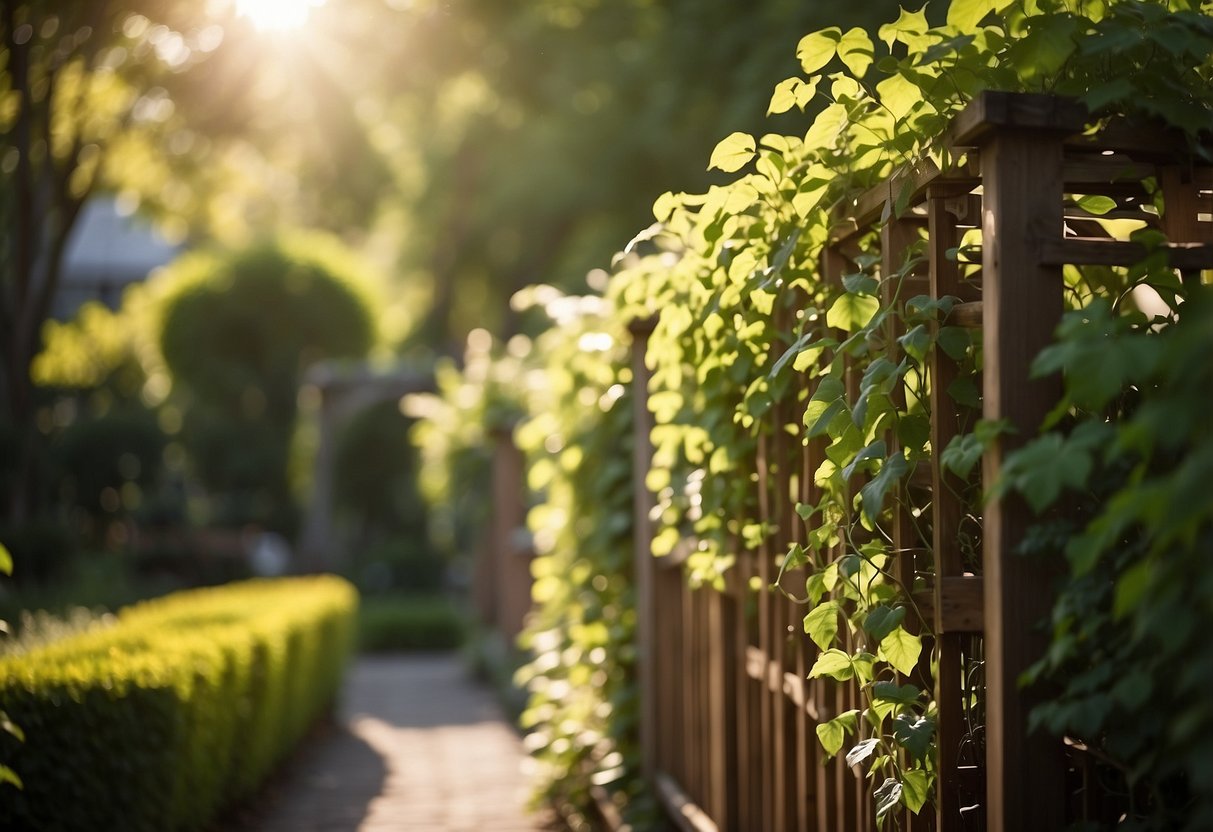
What makes rustic garden trellises so appealing? It’s their ability to blend functionality and style effortlessly. Made from materials like wood, twigs, and wrought iron, these structures provide a perfect backdrop for your vines and flowers, creating a picturesque setting you’ll love.
1) Wrought Iron Arch Trellis
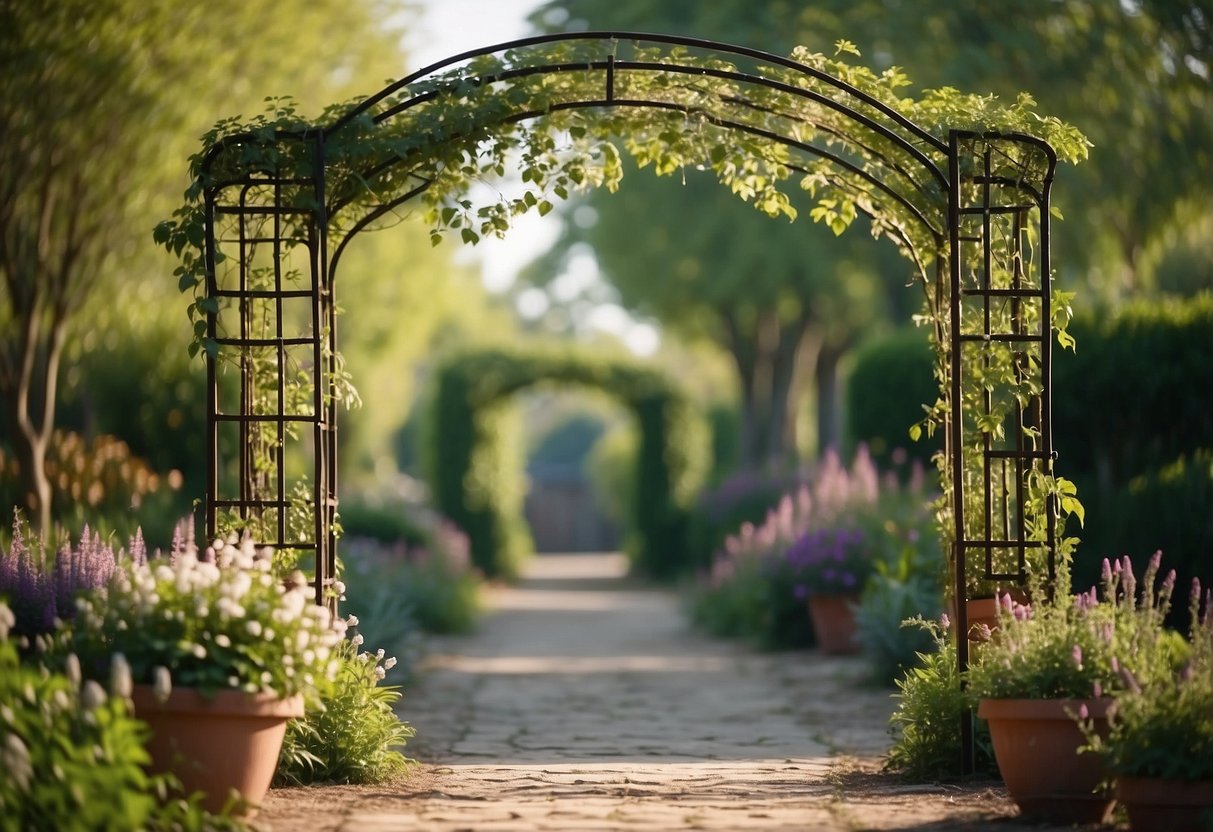
A wrought iron arch trellis adds a touch of elegance to your garden. Its strong, durable material can withstand various weather conditions, making it an excellent choice for outdoor structures.
You’ll appreciate its timeless beauty and the charm it brings to any landscape. Whether left bare or covered in climbing plants, a wrought iron arch trellis creates a striking focal point in your garden.
2) Bamboo A-Frame Trellis

Building a Bamboo A-frame trellis is a great way to add character to your garden. It’s sturdy and perfect for supporting climbing plants like beans, cucumbers, and peas.
To get started, you need bamboo poles and some garden twine. Simply tie two poles together at the top to form an A-shape, and add crosspieces for extra support.
This type of trellis is not only functional but also gives a rustic, natural look to your garden. Plus, you can easily customize the size and shape to fit your space and needs.
3) Wooden Fan Trellis

A Wooden Fan Trellis is a charming addition to your garden. It’s easy to set up and looks great, making it perfect for beginners.
You can use wooden slats arranged in a fan shape. This design works well for climbing plants like roses and clematis.
Mount your trellis against a wall or a sturdy post. It’s sure to add both beauty and function to your garden space.
4) Vintage Window Frame Trellis
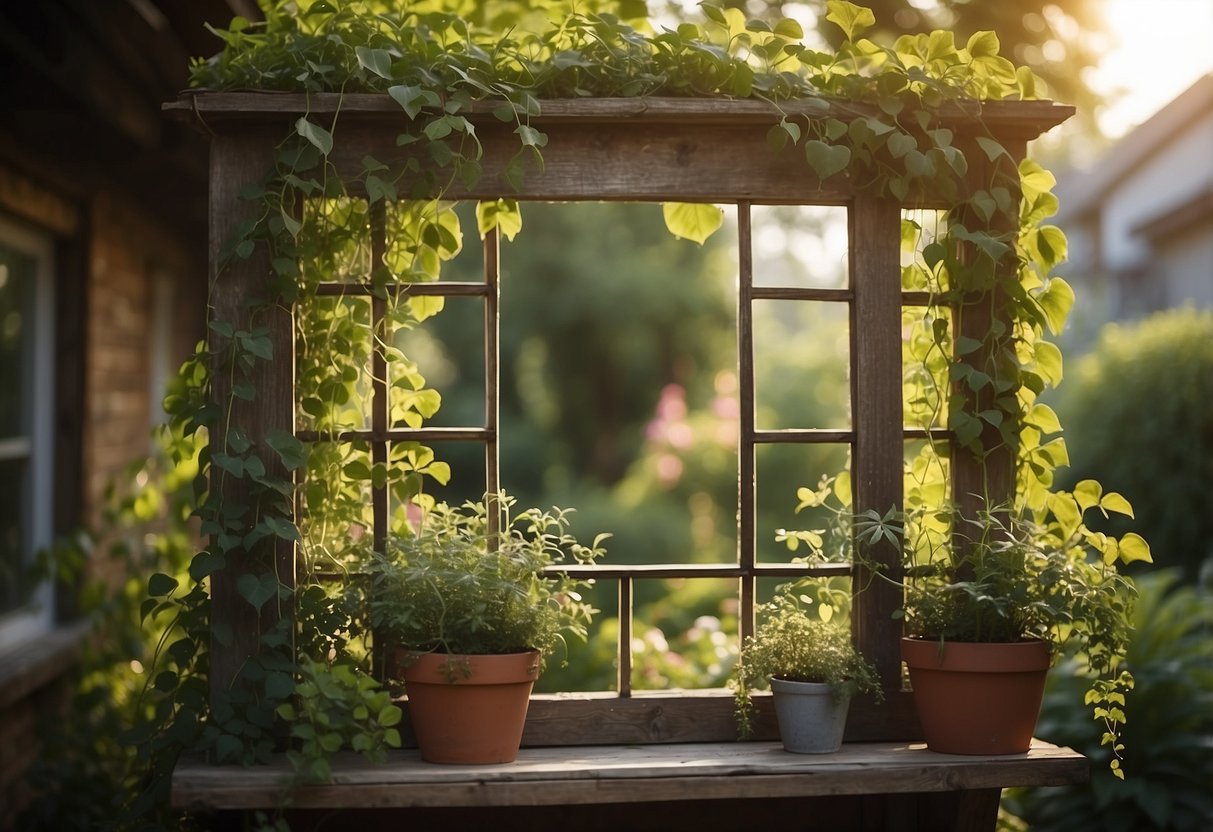
A vintage window frame can make a charming trellis for your garden.
To create one, start by finding an old window frame. Clean it well and remove any glass panes for safety.
You can paint the frame in a color that matches your garden theme or leave it as is for a rustic look.
Place the frame where you need support for climbing plants. Secure it firmly in the ground by burying the lower part or attaching stakes to the sides.
This adds both function and a touch of nostalgia to your garden. Check out these ideas for more inspiration.
5) Copper Pipe Trellis
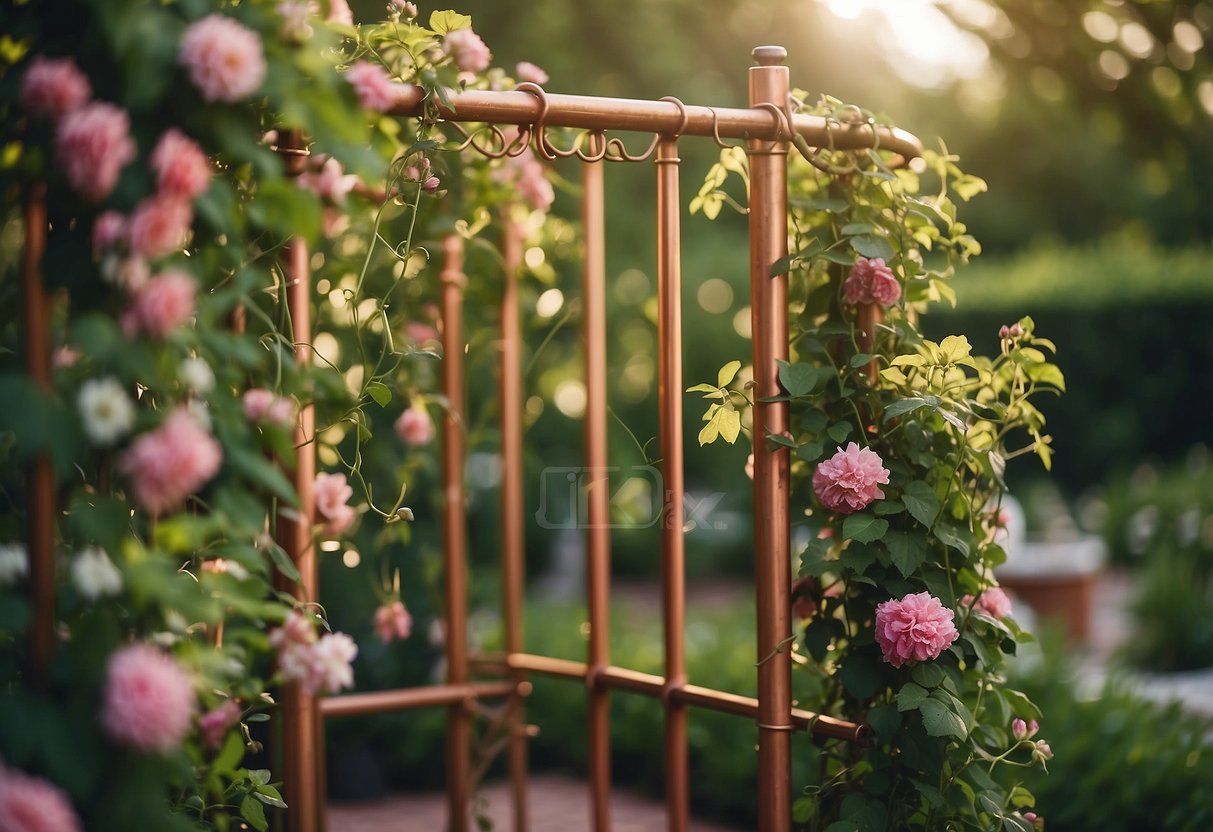
A copper pipe trellis adds a touch of elegance to your garden. It’s durable and patinas beautifully over time.
You can make one without soldering. Just cut the copper pipes using a hacksaw and connect them with copper fittings.
This type of trellis is perfect for climbing plants and gives your garden a unique, rustic look. For a detailed guide, check out this DIY copper pipe trellis.
6) Obelisk Garden Trellis

An obelisk garden trellis adds beautiful structure to your garden. These trellises are great for supporting climbing plants like beans, tomatoes, and sweet peas.
You can find obelisks made from various materials. A rustic cedar garden obelisk offers a natural look. Wrought iron options are also available for a more classic feel.
Decorative accents like stars or pointy tops can make your obelisk a focal point. These trellises not only support plants but also add height and interest to your garden layout.
7) Rustic Ladder Trellis
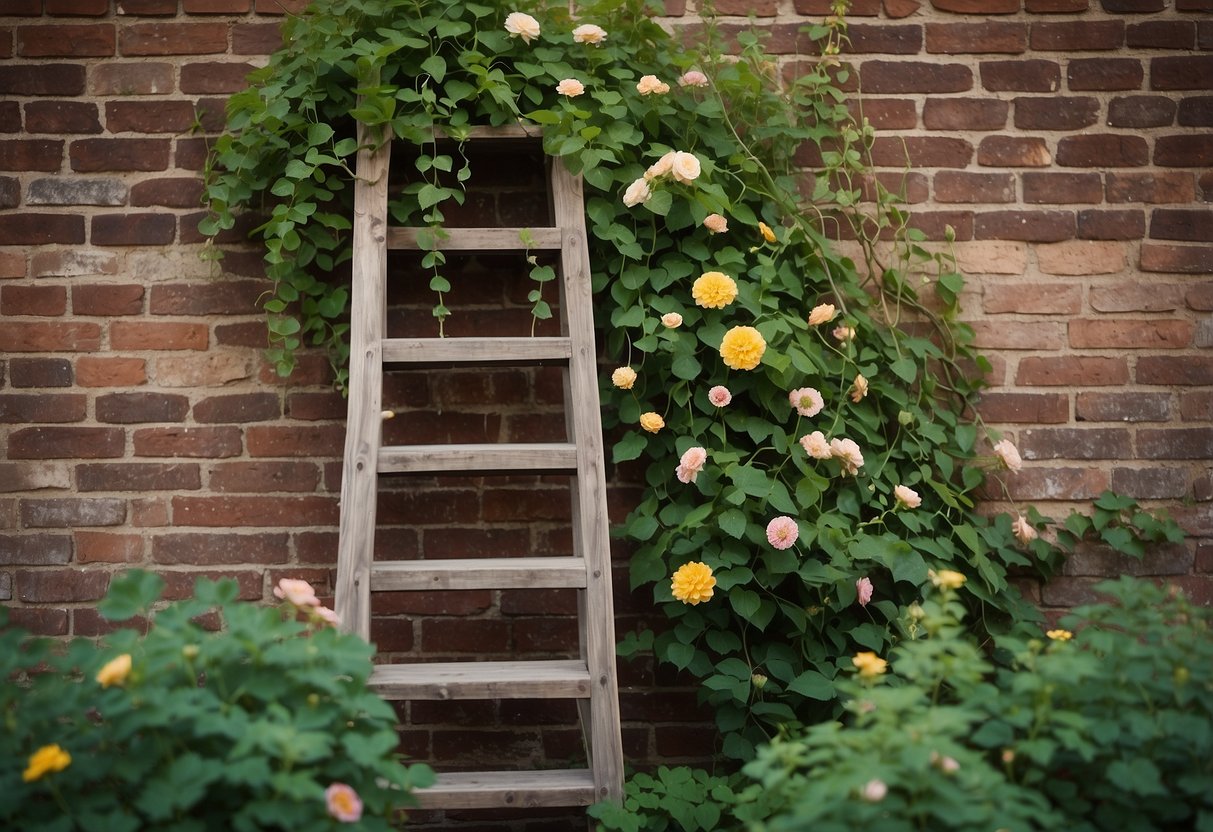
A rustic ladder trellis is a charming addition to any garden. You can make one using tree branches or an old wooden ladder. This type of trellis provides a natural look that blends perfectly with outdoor spaces.
Place the ladder in your garden and lean it against a wall or fence. You can use it to support climbing plants, such as beans or clematis.
You can also paint the ladder in earthy tones to enhance its rustic appeal. This simple yet effective DIY project adds both beauty and function to your garden.
8) Twine and Branch Trellis

Creating a twine and branch trellis is both fun and simple. Gather some sturdy branches from your yard. Aim for branches that are 1/2 to 1 inch in diameter.
Use natural twine to lash the branches together at the intersections. This not only looks nice but also decomposes naturally.
For support, dig small holes and set the trellis into the ground. Tamp the soil around the base. This will help keep it steady.
9) Reclaimed Door Trellis
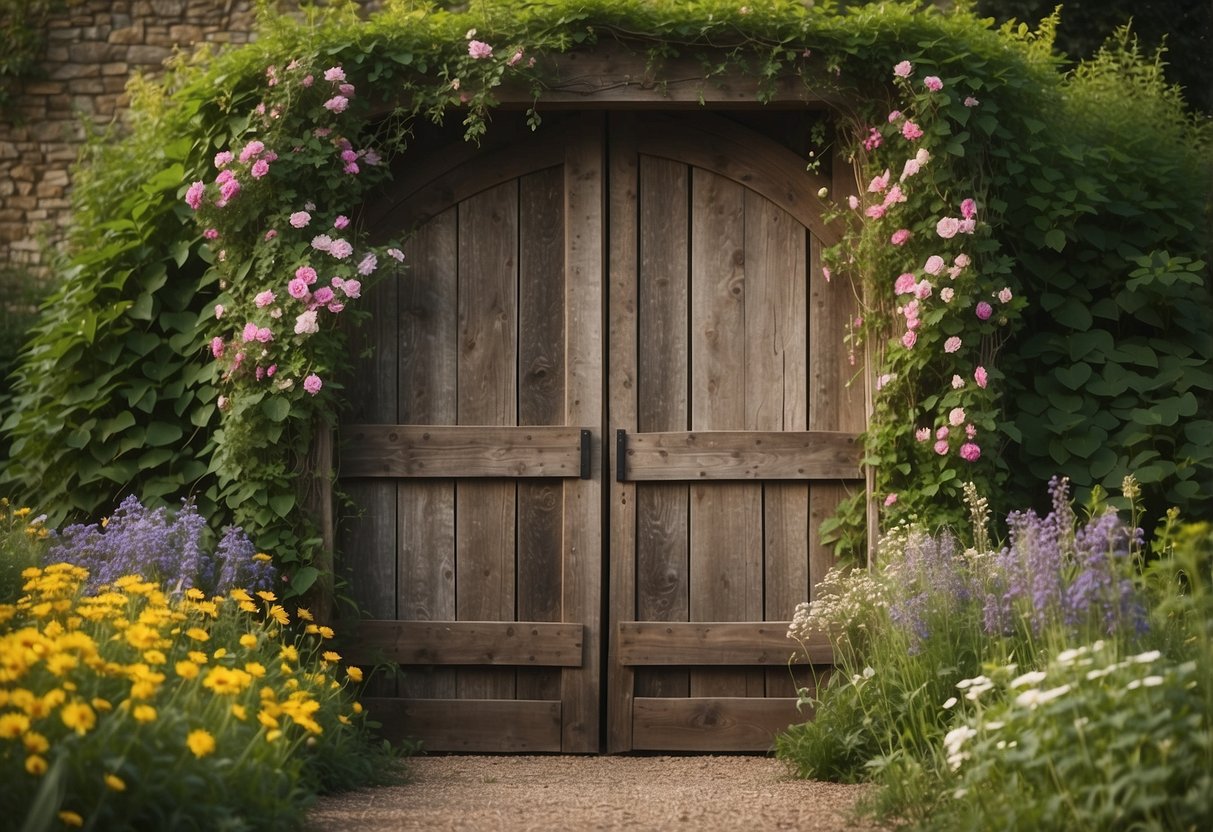
Using an old door as a trellis adds a unique touch to your garden. It’s a great way to recycle and bring some character to your outdoor space.
An antique door with peeling paint can give that rustic charm you’re looking for. Just secure it in the ground, and it’s ready to support your climbing plants.
Imagine morning glories or sweet peas winding up the panels. Your garden will look both creative and eco-friendly. You can find more ideas at Balcony Garden Web.
10) Wood and Wire Trellis
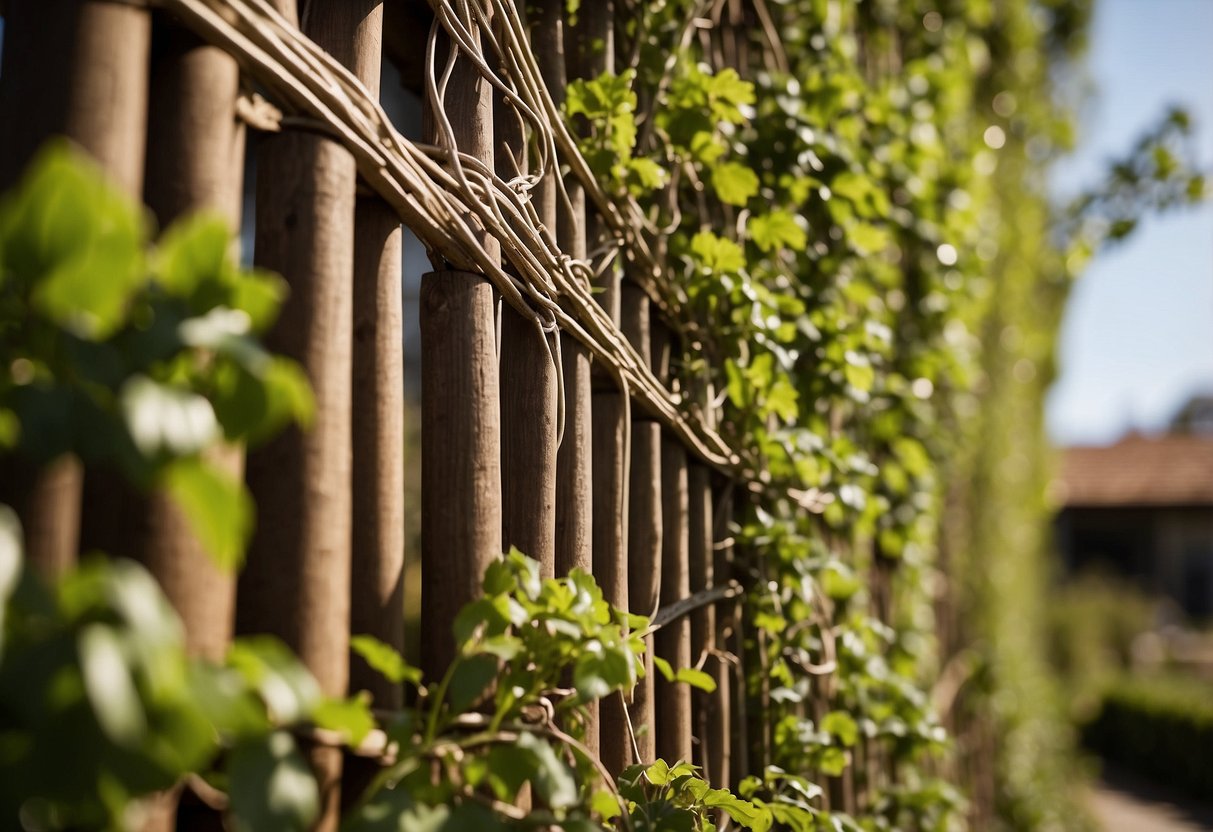
A wood and wire trellis offers both strength and style for your garden. It’s easy to build and looks great with many types of plants.
You can use wooden stakes combined with sturdy wire to create a framework. This allows plants to climb easily and adds a rustic touch to your garden.
Consider painting the wood for added charm. Mixing natural wood tones with metal wire makes for a classic and appealing design. For more ideas, check out these DIY trellis concepts.
Choosing Materials for Your Rustic Garden Trellis

When building a rustic garden trellis, selecting the right materials is key. Wood, metal, and reclaimed materials each provide unique benefits in terms of style, durability, and eco-friendliness.
Wood Options and Their Benefits
Wood is a popular choice for rustic trellises due to its natural look. You might consider cedar, redwood, or oak.
Cedar is resistant to rot and bugs, making it a durable option. Plus, it has a beautiful reddish hue that adds charm.
Redwood is another excellent choice. It’s sturdy, long-lasting, and has a rich color that ages well over time.
Oak is known for its strength. It can support heavy plants without bending or breaking.
Using wood also allows you to easily customize your trellis design with paint or stain.
Using Metal for Durability
Metal offers a durable and stylish option for a trellis.
Wrought iron is popular for its classic look and strength. It can support heavy climbing plants and withstand harsh weather.
Galvanized steel is another excellent choice. It’s rust-resistant and requires minimal maintenance.
Copper adds a unique, rustic appeal. Over time, it develops a patina that enhances its antique look.
Metal trellises generally last longer than wooden ones and provide a strong structure for your climbing plants.
Incorporating Reclaimed Materials
Using reclaimed materials is both eco-friendly and stylish. You can find materials like old barn wood or discarded metal pieces.
Old barn wood offers a weathered look that’s perfect for a rustic garden. It’s often sturdy and has a story to tell.
Reclaimed metal from items like old gates or grills can be repurposed into a unique trellis.
Combining materials can also create a one-of-a-kind piece. Mixing wood and metal can give you both strength and rustic charm.
By choosing reclaimed materials, you’re not only adding character to your garden but also promoting sustainability.
Integrating the Trellis into Your Garden Design
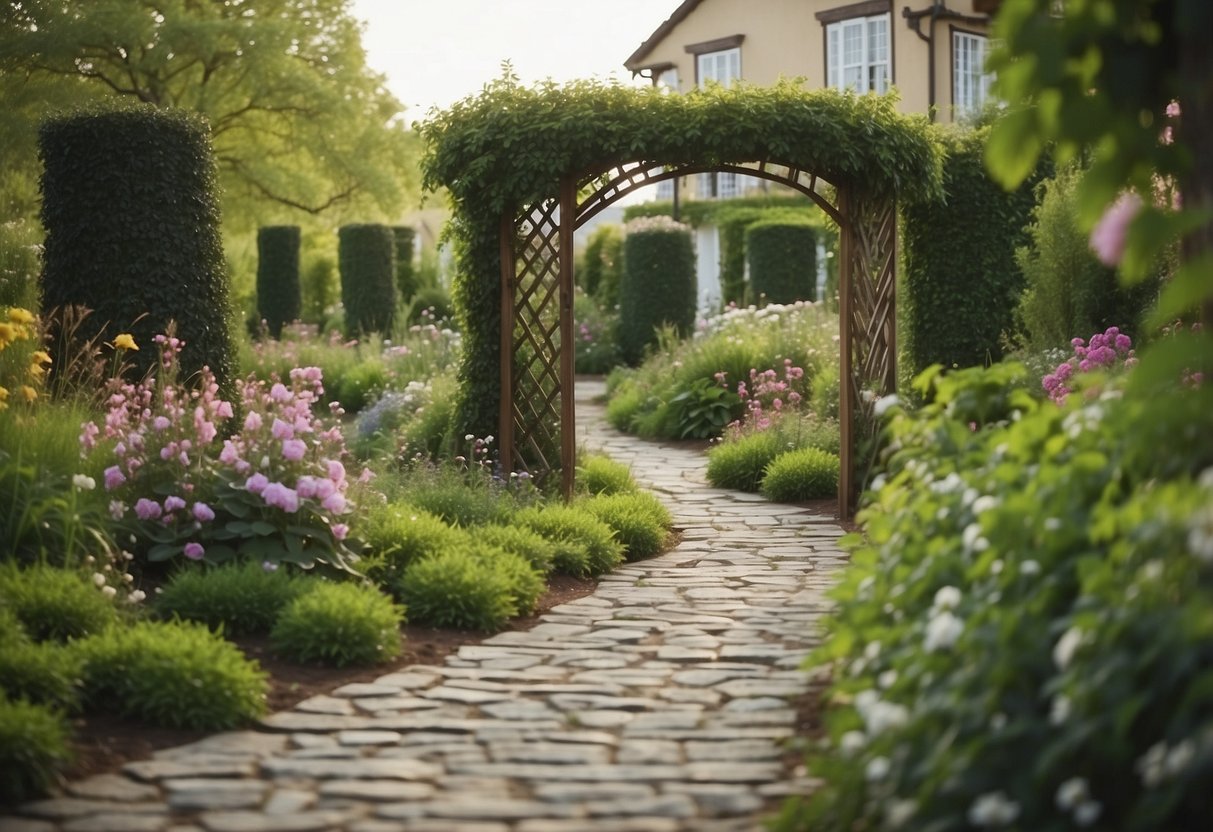
A trellis can transform your garden, adding both function and beauty. From blending with your garden’s theme to supporting vibrant climbing plants and strategic positioning, there are many ways to make the most of your garden trellis.
Harmonizing with Garden Themes
To make your trellis fit effortlessly into your garden, think about your garden’s existing style. For a rustic look, consider using materials like aged wood or distressed metal. These materials add a charming, old-world feel.
If your garden is modern, sleek metal or painted wood in clean lines can work well. Matching the trellis materials and colors with your garden’s overall scheme can create a cohesive look that enhances the space.
Consider the shape and texture of your plants, too. A rustic garden with wildflowers benefits from a natural, less structured trellis. A manicured garden might look best with more refined designs.
Adding Climbing Plants for Aesthetic Appeal
Choosing the right plants for your trellis is key to its success. Flowering vines like clematis or roses can add vibrant colors and sweet scents. Edible plants such as peas or beans can make your trellis both beautiful and functional.
Climbing plants not only add greenery but also make your garden feel lush and full. When selecting plants, consider their growth patterns and colors to create a balanced look.
Planting different species together can provide a mix of textures and blooms. For example, pairing a fast-growing vine with a slower one can ensure your trellis looks full year-round.
Positioning for Maximum Visual Impact
Where you place your trellis can greatly affect its impact. Positioning it at the end of a path or as a backdrop for a seating area can draw the eye and create a focal point. A trellis near your entrance can welcome guests with a lovely display.
Think about sunlight and exposure. Most climbing plants need plenty of light, so place your trellis where it can get adequate sun. However, consider the plant’s needs, as some may prefer partial shade.
Using a trellis to screen an unsightly view or divide sections of your garden can also be effective. This not only adds beauty but also enhances privacy and structure in your garden design.
Maintenance Tips for Longevity
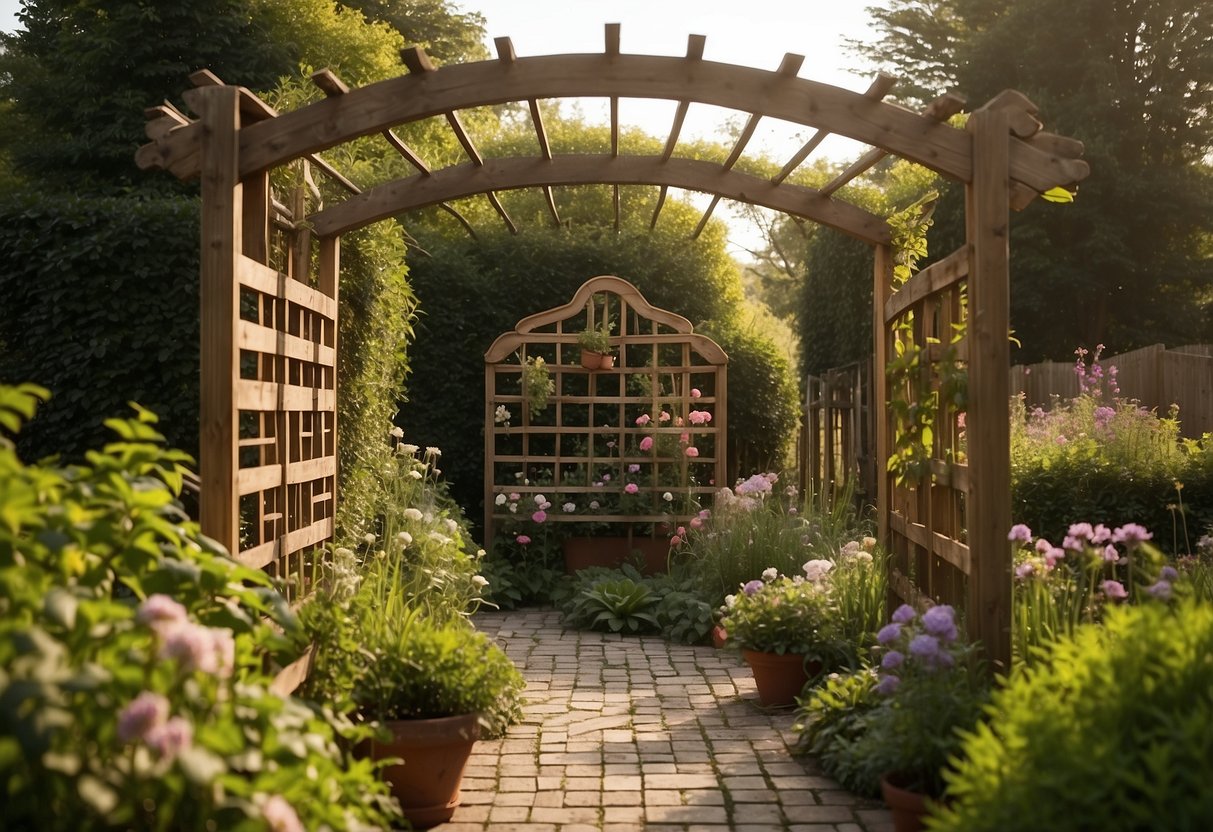
Keeping your rustic garden trellis in good condition involves protecting it from weather and pests, regular cleaning, and making timely repairs.
Protecting Against Weather and Pests
Weather can be tough on your trellis. Apply a weatherproof sealant to protect against rain and sun damage. Reapply this sealant annually. For wooden trellises, consider using a varnish or paint specifically designed for outdoor use.
Pests like termites can damage wooden trellises. To prevent this, treat the wood with insect-repellent spray. If you spot bugs or other pests, address the issue immediately to avoid extensive damage. Regular inspections can help you catch problems early.
Regular Cleaning and Upkeep
Dirt and mold can accumulate on your trellis, especially after wet seasons. Clean it twice a year with a mild detergent and water. Avoid using harsh chemicals as they can damage the material and harm your plants.
Use a soft brush to scrub away dirt and rinse thoroughly with a garden hose. For metal trellises, check for rust and clean it off to keep the structure strong. Clean trellises not only look better but also last longer.
Repairing and Reinforcing Your Trellis
Over time, trellises may suffer from wear and tear. Inspect your trellis regularly for any signs of damage, like loose joints or broken parts. If you notice any issues, repair them as soon as possible to prevent further damage.
For wooden trellises, tighten any loose screws and replace broken slats. Metal trellises may need welding if parts become detached. Reinforce your trellis by adding extra support to weak areas. Make sure that your trellis remains sturdy to support the weight of your climbing plants.
By following these maintenance tips, you can ensure that your rustic garden trellis remains beautiful and functional for many years.







